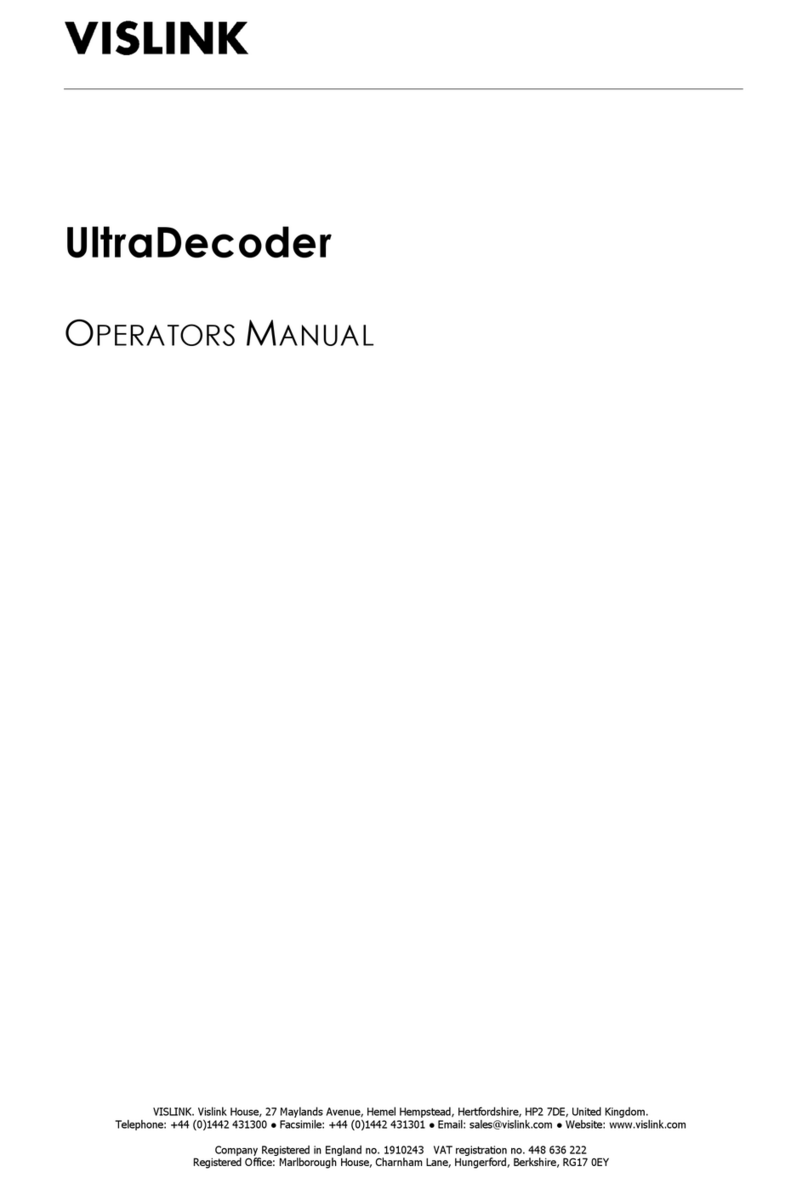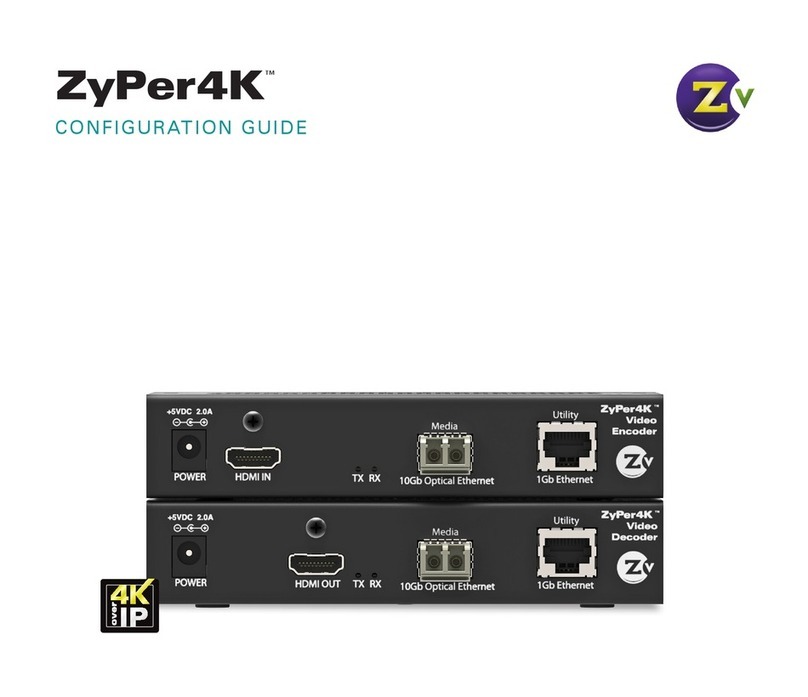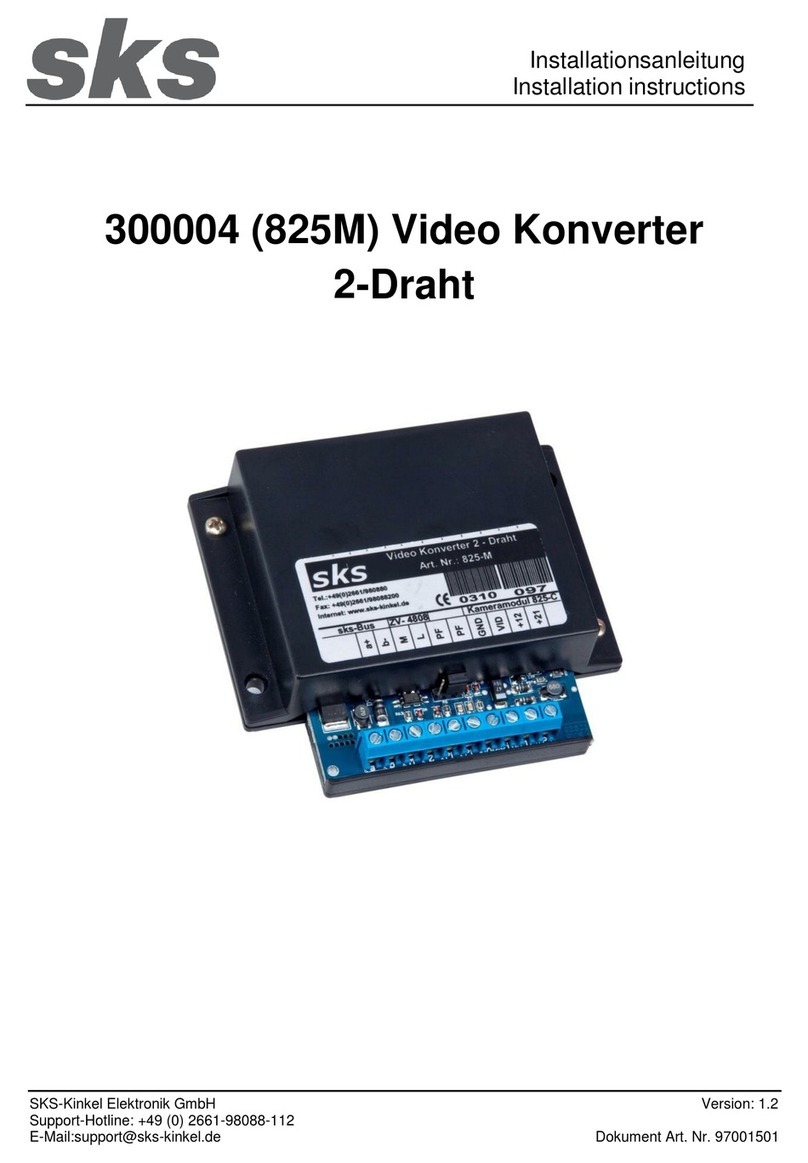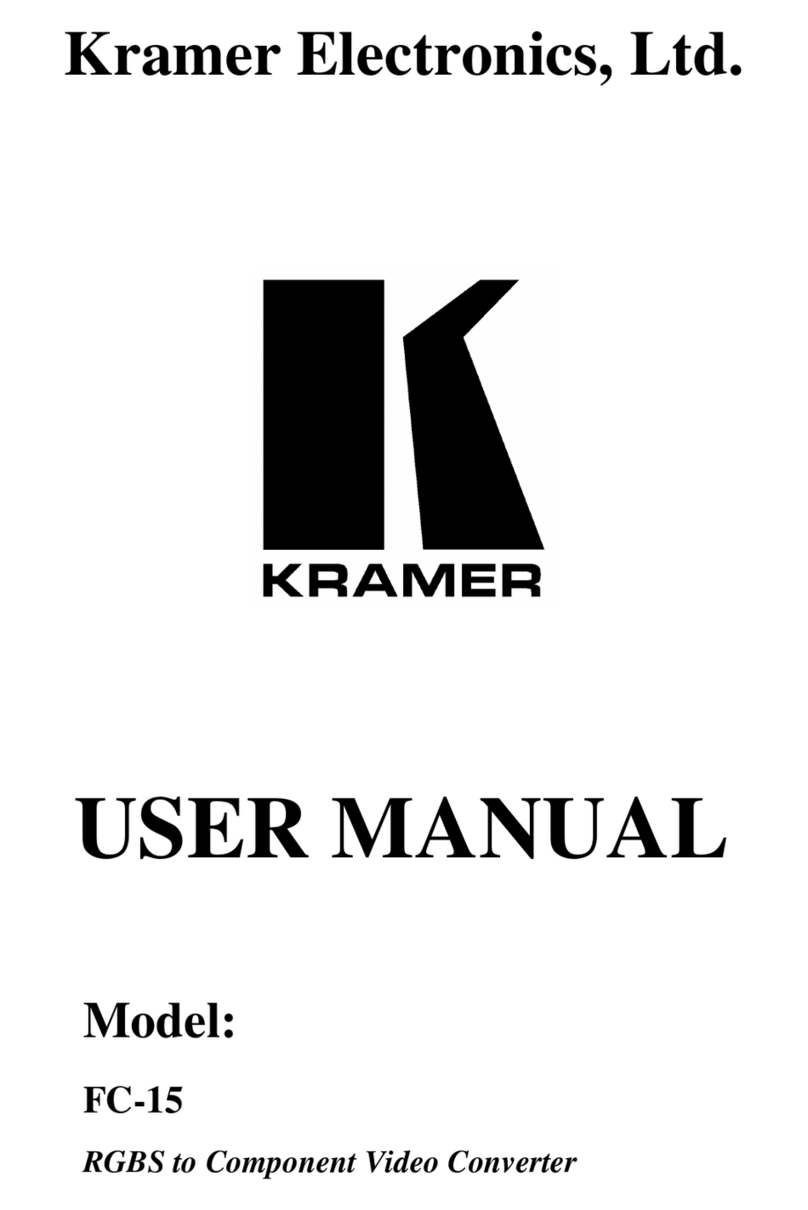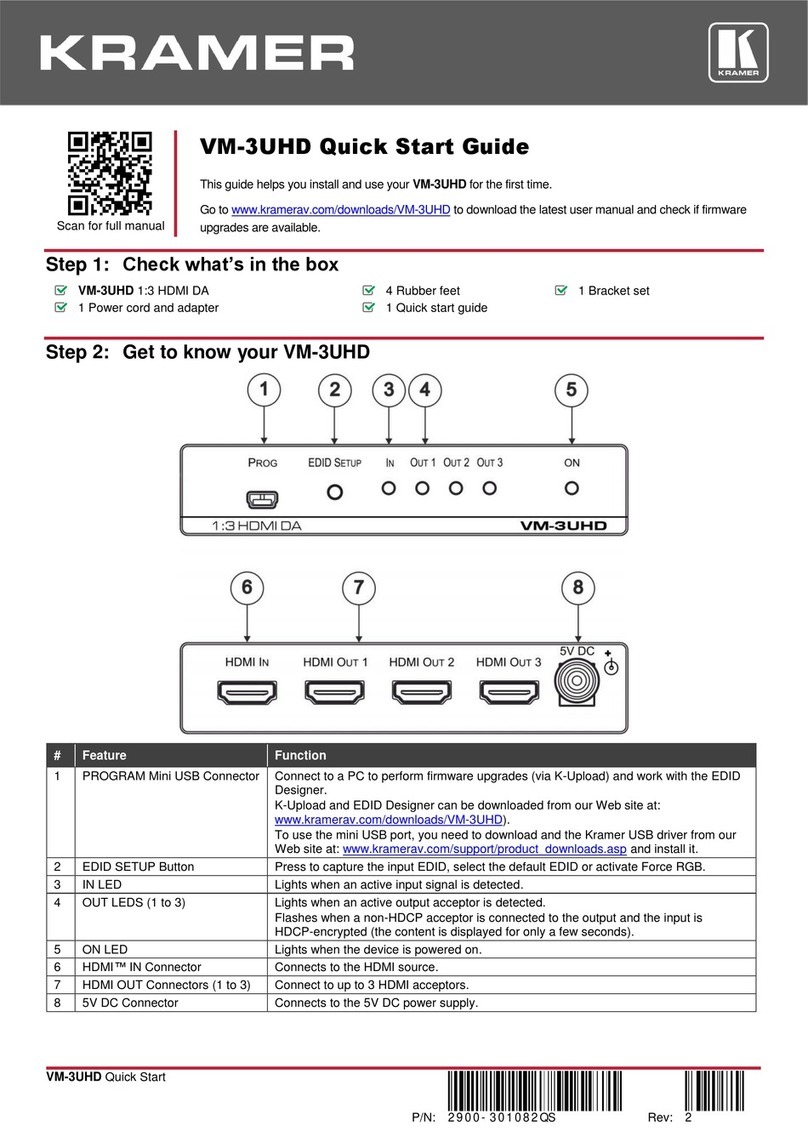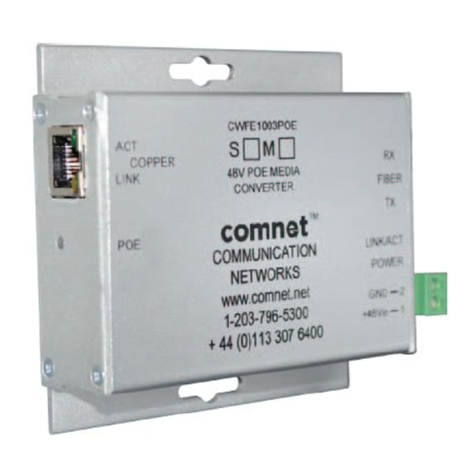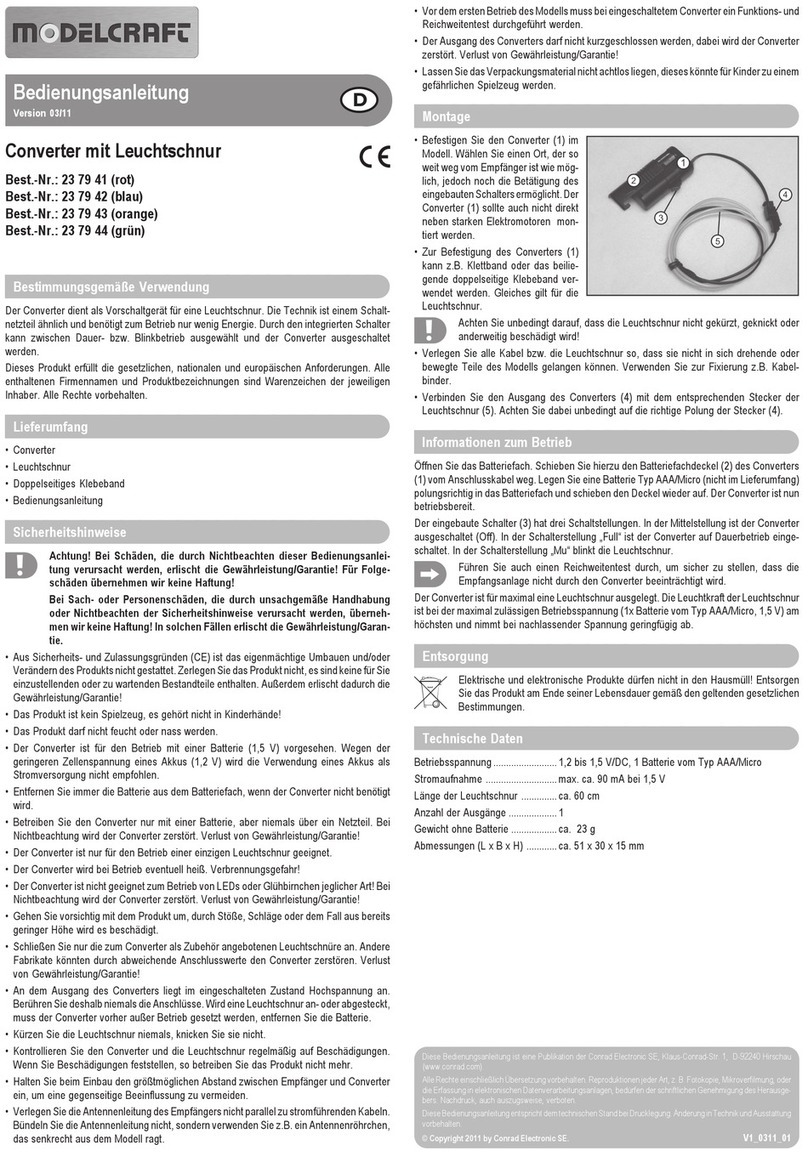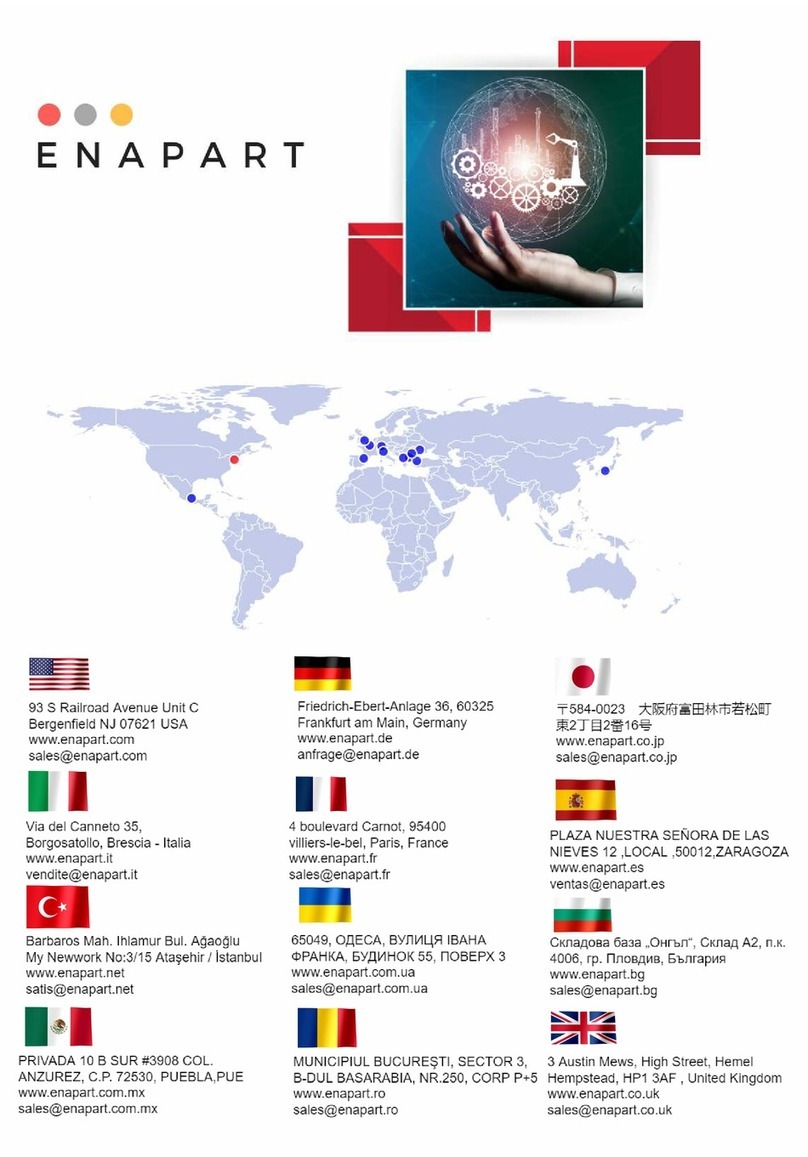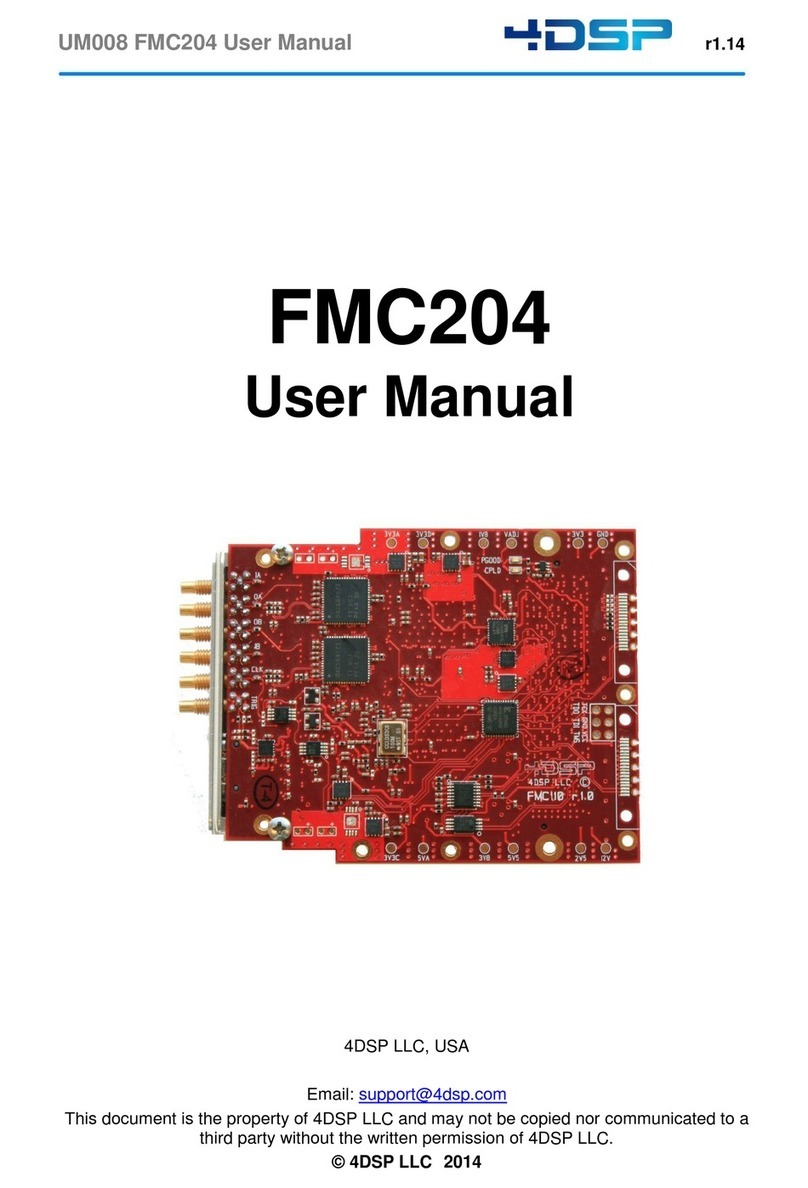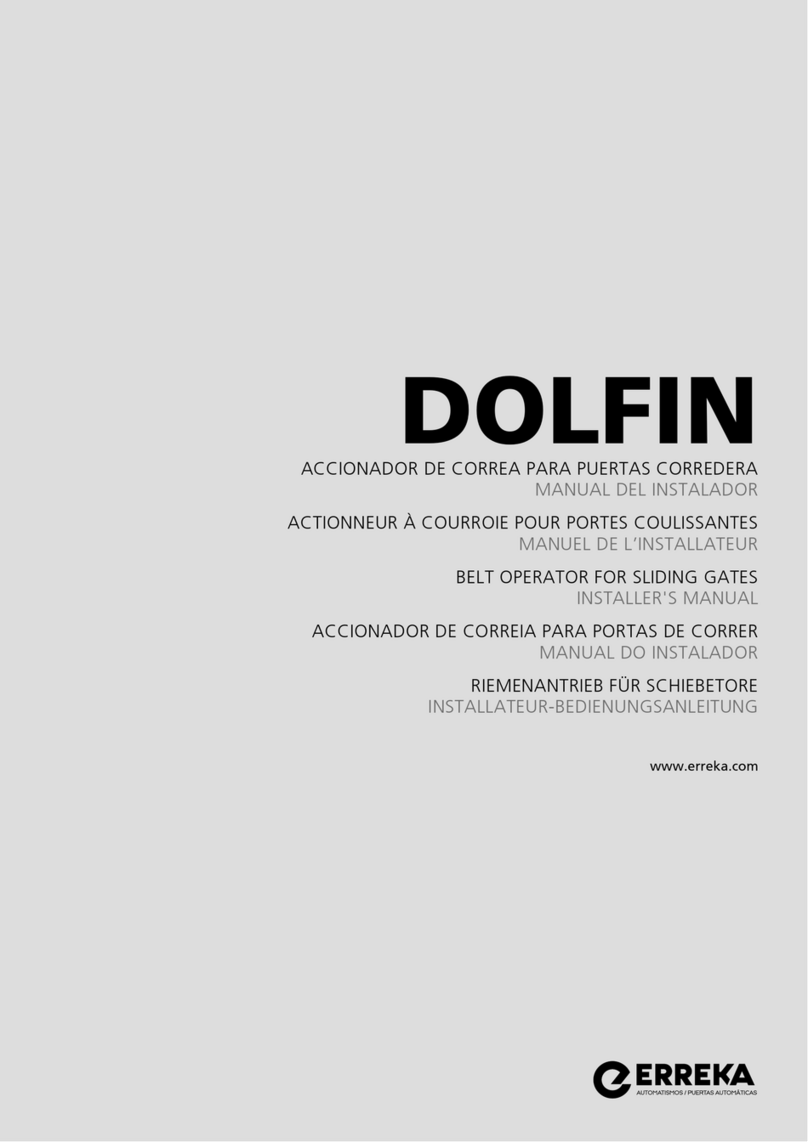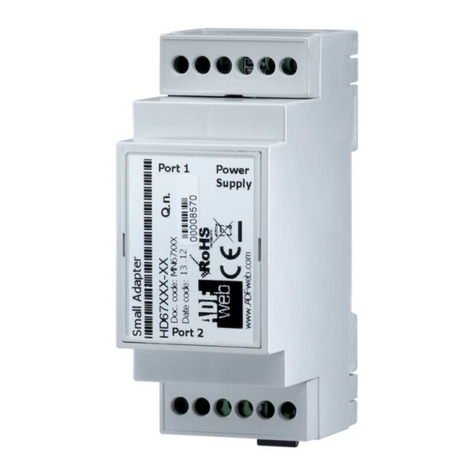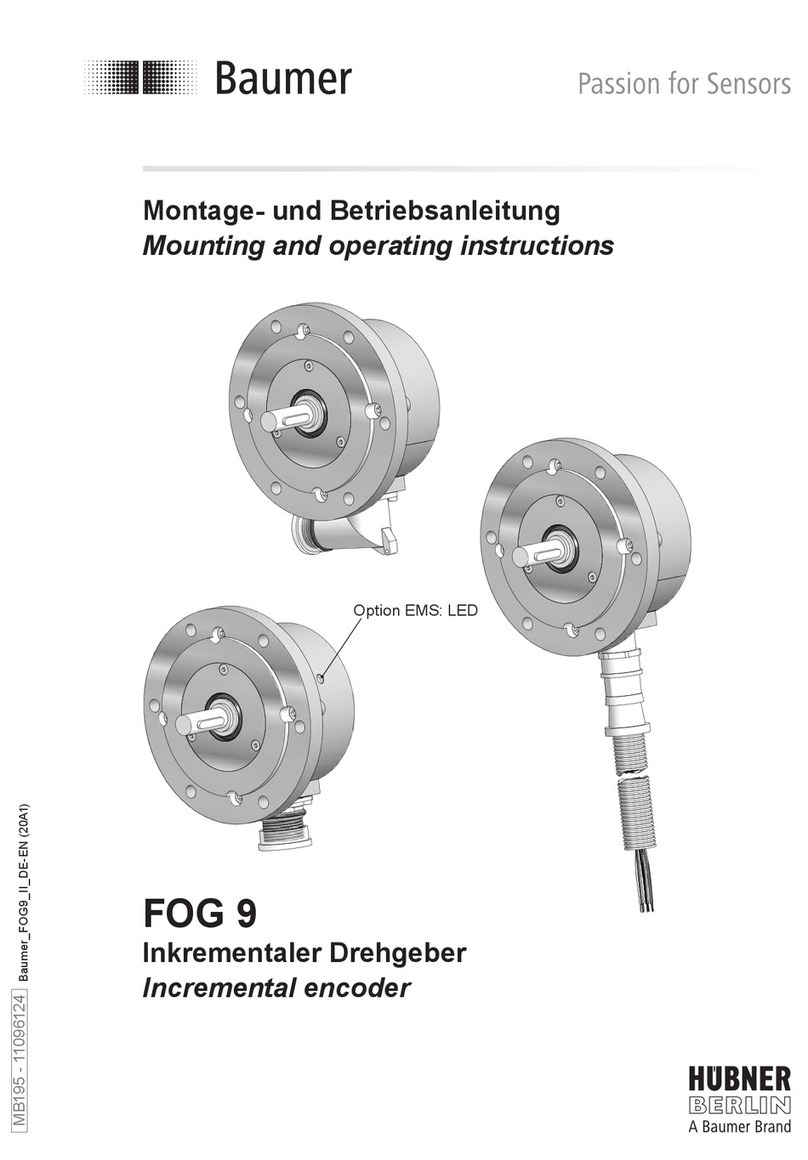DesignTech MIPC-1A User manual

1
MIPC-1A 64 INPUT TO MIDI ENCODER
For Hauptwerk
Features
64 inputs, no matrix wiring.
DIP switch selectable, Keyboard inputs with starting midi note 35, Stop Input with midi note starting at 0.
In Stop Input Mode, switch selectable midi note range 0 to 63 or 64 to 128.
In Keyboard or Stop input mode, an additional 24 Piston Inputs are available.
DIP Switch selection of Midi Channels 1 to 16.
4 Analog Inputs for Swell Shoes and Crescendo.
Crystal Controlled Microprocessor.
Midi IN and Midi OUT Jacks. Optical coupled MIDI INPUT.
Operating voltage, 8 to 15 Volts DC at less then 10ma current..
Input connections either by two 34 pin ribbon cables or 5 twelve Molex KK-100 series connectors, plus 1 4
pin connector for inputs 61 to 64. Contact commons are wired to GROUND.
Installation
Switch Settings, refer to Fig. 1
DIP SW3 Keyboard/Stop Mode, locate the THREE position DIP switch marked SW3-1, SW3-2 and SW3-3. If the card is
being used for Manual (keyboard) or Pedal inputs, set SW3-1 to OFF. In the Manual mode, the starting midi note for input 1
(C1) is NOTE 36. The same applies to Pedal Board wiring.
For the STOP Mode, set SW3-1 to ON, the first midi note for input 1(C1) is Note 0 and follows through to midi note 63 for In-
put terminal 64. Setting SW3-2 to the ON position will change Input 1 (C1) to midi note 64 and follow through to midi note 127
on Input Terminal 64. This option will allow up to 128 Stops on one Midi Channel.
SW3-3 will ENABLE the 24 AUX inputs when SW3-3 is set to ON or DISABLE with SW3-3 set to OFF. In the Disable (OFF)
mode, the input are off in both the Keyboard and Stop mode.
DIP SW2 MIDI CHANNEL SELECTION, Locate the Midi Channel Selection, four position DIP switch and refer to Fig. 2,
the MIDI Channel Switch Setting. The X indicates the that switch is set to ON position. Channels 1 through 16 can be selected
for each card. The recommended channels assignments are the following. Pedals-Channel 1, Keyboard 1-Channel 2, Keyboard
2-Channel 3, Keyboard 3- Channel 4. Stops and Pistons-Channels 15 and 16. These are only recommendations and seem to be
the normal channel assignments that have been followed in midi files that were created in Hauptwerk.
DIP SW1 SWELL SHOE, The 4 position Swell Shoe DIP switch is Factory set to ON and should be left ON if not used. Tun-
ing any of the four switch’s to OFF with no swell shoe pot connected will result is a stream of midi data. Swell shoe connections
will be covered later.
Wiring, See Page 4 for additional information for the MIPC-1A-HV version.
64 Inputs, connections to the 64 inputs can be made one of two ways depending on connector configuration when the card was
ordered. For the two ribbon connectors, standard flat 34 conductor ribbon cable would be used with connectors crimped on one
or both ends. The 12 pin Molex KK-100 connectors and crimp terminals can accept wire sizes from 22 to 26 gage.
Contact Common All contact common terminals for the manuals, pedals and stops should be connect to Ground or 0 volts. The
inputs on the card are at Plus 5 volts and need to be pulled to Ground to operate.
Additional 24 Inputs. These input terminals are separate form the 64 inputs and can be used for stops or pistons. When DIP
SWITCH SW3-1 is set of OFF, the KEYBOARD Mode, midi notes 104 to 127 will be generated and on the same midi channel
that MIDI CHANNEL Switch SW2 is set to.
Setting DIP SW3-1 to the ON or STOP position will cause the 24 output to generated midi notes 0-23 and 64 to 87, depending

2
on the setting of DIP Switch SW3-2, midi note range. NOTE: the 24 inputs will be on the next MIDI Channel UP from what the MIDI
Channel that the card is set to. If the card is set to MIDI Channel 10, the 24 notes will be on MIDI Channel 11.
SEE FIG. 4, for Switch Setting.
Swell Shoe Connections. Located between the Swell Shoe DIP switch and the Power Connector is a Six terminal connector strip
labeled - 1, 2, 3, 4 and +. Refer to Fig 3 for the wiring configuration. Each shoe will require a 5000 ohm Liner Taper potenti-
ometer, the High Side terminal is wired to the PLUS terminal, the low side of the pot to the GROUND terminal of the six pin
connector P-1. The wiper of each pot will connect to terminals labeled 1, 2, 3 and 4, depending on how many swell shoes are in-
stalled. The mating connector is a SIX Terminal Molex KK-100 series.
Swell Shoe DIP Switch For each terminal that has a pot connected, the corresponding DIP switch will be put in the OFF posi-
tion. For example, if a pot is connected to Terminal 1, switch 1 will be set to OFF and switch’s 2, 3 and 4 will be set to ON.
When testing the swell shoe operation, midi note 0 should be seen for closed and note 128 for full open. If the note range is re-
versed, reverse the wires on Pin 1 and 6 on the connector.
NOTE: On ANY UNUSED INPUTS, THE CORASPONDING SWITCH MUST BE IN THE ON POSITION.
Power Connections. The MIPC-1A card has power connection block with four terminals, two for the PLUS power line and two
for the GROUND power line. The two terminals configuration is designed to provide a terminal for the incoming power wire and
a second terminal for the out going wire to the next card in the series. Recommended wire size can be either 20 or 22 gage solid
and preferably Red for Plus and Black for Ground. Power requirements are a regulated 8 to 15 Volt DC power supply. Each
MIPC-1A or MIPC-1A-HV card requires 10ma to operate.
Midi IN and Midi OUT Jacks These jacks are the standard five pin DIN jacks. After mounting the cards, connect a midi cable
from the Midi OUT of the first card in the series would be connected to the MIDI IN on the second card. On the second card Midi
OUT to the Midi IN on the next card and so on. Midi cables are available in standard lengths of 1, 3 and 5 feet and are available
from most music stores or on line.
MIDI Interface Devices. A Midi to USB interface will be required to connect the MIPC-1A cards to the Haupt-
werk computer. It is recommended that a good, high quality interface be used to ensure long, trouble free opera-
tion. Two MIDI to USB interfaces that we have found that meet these requirements are the Cake-
walk UM-1G and the M-Audio MIDISPORT 2X2.
LED Indicators There are two LED lamps on the card, Green LED for Power ON, and Red LED
for Midi Activity. The Red LED will flash when midi data is flowing into the card or through the
card.
Positive/ Negative Input Jumper The MIPC-1A can be set for Negative keying (ground) or posi-
tive keying (plus 5VDC). The MIPC-1A-HV, the jumper should be set to GROUND with input
keying voltage ranging from +8 to +18 VDC.
NOTE: the jumper MUST be installed for proper operation.
Channel Sw 1 Sw 2 Sw 3 Sw 4
1 X
2 X
3 X X
4 X
5 X X
6 X X
7 X X X
8 X
9 X X
10 X X
11 X X X
12 X X
13 X X X
14 X X X
15 X X X X
16
1 2 4 8
Fig. 2
24 STOP OR
PISTON INPUTS
64 INPUTS FOR KEY-
BOARD OR STOPS,
Molex KK-100 Connectors
Fig. 1
MIDI IN
MIDI OUT
GROUND INPUT
PLUS VOLTAT INPUT
SWELL SHOE INPUTS
RIBBON CABLE 1, 34 INPUTS
RIBBON CABLE 2, 34 Terminal
CONNECTOR, 30 INPUTS
Swell Shoe Select Sw.
Channel Select
Keyboard/Stop Mode Select
and Range Select, SW3.
Input 1 Input 24
Input 1
Input 64
Pos or Neg input jumper

3
Fig. 3
DIP SWITCH SW3 MIDI Note Range 24 Input Midi Note MIDI OUTPUT CHANNEL
FOR THE 24 INPUTS
SW3-1 OFF, SW3-2 OFF 36 TO 99 104 TO 127 SAME AS THE CARD
CHANNEL
SW3-1 ON, SW3-2 OFF 0 TO 63 0 TO 23 UP ONE CHANNEL FROM
THE CARD CHANNEL
SW3-1 ON, SW3-2 ON 64 TO 128 64 TO 87 UP ONE CHANNEL FROM
THE CARD CHANNEL
Fig. 4
Switch ON Position Switch OFF Posi-
MIPC-1A Switch Commons to GROUND.
MIPC-1A Controller
MIDI IN MIDI OUT
GND
+8-20 VDC
Input 1, C Input 1, C
Input 61 Input 61
Swell / Crescendo Controls
MIDI IN MIDI OUT
MIPC-1A Controller
+8-20VDC
GND
PISTONS
KEY CONTACTS
Pin 1
Pin 2Pin 3
Pin 4
Pin 5
Pin 6
DIP SW 1
DIP SW 2
DIP SW 3
DIP SW 1
DIP SW 2
DIP SW 3
DIP SW-1, Swell Shoe Enable
DIP SW-2, MIDI CHANNEL SELECT
DIP SW-3, SW-1= Manual/Stop Select. Off=Manaul, ON= Stop Select
DIP SW3, SW-2= MIDI NOTE RANGE SELECT IN STOP MODE. OFF= 0-63, ON=64-128
Input 1
Input 24
5K (5000 ohms) Pots.
SW3-1
SW3-2
SW3-3
SW3-1
SW3-2
SW3-3
SW2-1
SW2-2
SW2-3
SW2-4
SW2-1
SW2-2
SW2-3
SW2-4
SW1-1
SW1-2
SW1-3
SW1-4
SW1-1
SW1-2
SW1-3
SW1-4
DIP SW3, SW3-3 AUX 24 INPUTS ENABLE/DISABLE. OFF=DIABLE , ON=ENABLE
AUX 24 INPUTS.
Terminal 4, GROUND
Terminal 5, PLUS 12 VOLTS DC
2
3
1
NES-15-12
Power Supply
120 VAC Plug
SWELL SHOE SELECT
MIDI CHANNEL SELECT
KEYBOARD/STOP
MIDI NOTE RANGE
AUX 24 ENABLE
NEVER CONNECT A +12 V COMMON
BUSS TO THE INPUT TERMINAL OF
THE MIPC-1A. ONLY A COMMON GND

4
MIPC-1A-HV switch commons
are connected to PLUS 7 to 17
Volts D.C.
MIPC-1A HV Controller
MIDI IN MIDI OUT
GND
+8-20 VDC
Input 1, C Input 1, C
Input 61 Input 61
Swell / Crescendo Controls
MIDI IN MIDI OUT
MIPC-1A HV Controller
+8-20VDC
GND
PISTONS
KEY CONTACTS
Pin 1
Pin 2Pin 3
Pin 4
Pin 5
Pin 6
DIP SW 1
DIP SW 2
DIP SW 3
DIP SW 1
DIP SW 2
DIP SW 3
Input 1
Input 24
5K (5000 ohms) Pots.
SW3-1
SW3-2
SW3-3
SW3-1
SW3-2
SW3-3
SW2-1
SW2-2
SW2-3
SW2-4
SW2-1
SW2-2
SW2-3
SW2-4
SW1-1
SW1-2
SW1-3
SW1-4
SW1-1
SW1-2
SW1-3
SW1-4
AUX 24 INPUTS.
Terminal 4, GROUND
Terminal 5, PLUS 12 VOLTS DC
2
3
1
NES-15-12
Power Supply
120 VAC Plug
SWELL SHOE SELECT
MIDI CHANNEL SELECT
KEYBOARD/STOP
MIDI NOTE RANGE
AUX 24 ENABLE
MIPC-1A-HV KEY AND PISTON SWITCH INPUTS

5
MIPC-1A-HV AUX 16 PIN INFORMAITON
Note, the AUX input piston pins have been reduced from 24 to 16 on the MIPC-1A-HV card due to limited circuit
board space. As a result if any or all of the sixteen pins are used for STOP TAB or DRAW KNOBS CONTACTS, it is
necessary to add a 22K (22,000 ohm) resister to the each input terminal. The resister can be added either at the card pin
or stop action switch. Failure to add a 22k resistor to each used input pin can result in damage to the MIPC-1A-HV
circuit.
Should the Aux Inputs be used for PISTONS, it is necessary to add a single 22k resistor to the common buss terminal
of the pistons for pistons associated with each card.
The Main 64 Input terminals have the 22k resister added on the printed circuit board, there is no need to add a resister
to any of the 64 inputs.
Plus 7 to 17 VDC
Add 22k Resistor to each input terminal
1
2
3
4
5
3
2
1
1
2
3
1
2
3
Pin –1
MIDI Cable Assembly
Located next to each MIDI Jack are two three pin Molex connectors which are also Midi IN, Midi OUT connections. Cable assem-
blies can easily be made using the enclosed three terminal Molex connectors and a desired length of TWO CONDUCTOR
SHILDED cable.
1
2
3
4
5
3
2
1
1
2
3
1
2
3
Plus 7 to 17 VDC
For PISTON control, add a 22K resistor the
piston common buss lead.
MIPC-1A-HV AUX INPUTS.
PISTONS
PISTON CONFIGURATION STOP ACTION CONFIGURATION

6
Positive/ Negative Input Jumper The jumper located at the end of the MIPC-1A and MIPC-1A-HV
needs to be set in one of two positions for proper operations. If the jumper is not present, the encoder will
not operate correctly.
MIPC-1A: The jumper is set on the Center Pin and +5 V pin.
MIPC-1A-HV: The jumper is set on the Center Pin and GND.

7
DesignTech Systems, Inc.
Downers Grove, IL 60515 USA
630-324-8199
Email: info@dtsmidisystems.com
1-YEAR UNCONDITIONAL WARRANTY
DTS Midi Systems
Manufactured by DesignTech Systems, Inc.
“DTS Midi Systems” products are warranted against defects for one year from date of purchase
from DTS Midi Systems, an authorized distributor and dealers. Within the one year period,
“DTS Midi Systems” products will be repaired or exchanged (at our option) without charge for
parts or labor. Simply return your intercom along with proof of purchase, return postage of
$10.00 (within USA) and it will be repaired or replaced within one week. Warranty does not
cover transportation cost or product misuse, accidental damage, owner tampering or reworking.
You use the purchased items at your own risk. We are not responsible for any damages, injuries,
copyright violations, financial losses or other similar due to the consequence of the use or misuse
of the purchased goods.
You can return your order within 3 days of receipt if it has been damaged during delivery, we
will ship you a replacement item at our expense.
The items can be returned for a full refund within 3 days if it has not been damaged or misused
after delivery.
Except as provided herein, DesignTech Systems, Inc makes no warranties, expressed or implied,
including warranties or merchantability and fitness for a particular purpose.
NOTE: Some states do not permit limitations or exclusions of implied warranties, therefore, the
aforesaid limitations (s) may not apply to the purchaser.

